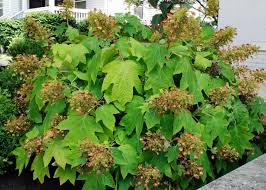 Every garden, large or small, has microclimates. Even if your garden consists of a container array on a balcony or a series of window boxes, growing conditions can change depending on where your plants are located. Whether you want beautiful roses, floriferous hydrangeas, or plentiful zucchini, it pays to be mindful of microclimates.
Every garden, large or small, has microclimates. Even if your garden consists of a container array on a balcony or a series of window boxes, growing conditions can change depending on where your plants are located. Whether you want beautiful roses, floriferous hydrangeas, or plentiful zucchini, it pays to be mindful of microclimates.
My suburban garden is a great example. Years ago, one of my predecessors replaced a small, one-car garage with a big, three-car structure. I suspect the soil left over after the excavation was used to create a narrow, raised bed by the new garage, plus a larger terraced section adjacent to the house. Both are bounded by dry-laid stone walls. This means that the lower back garden, which has a gentle downward slope culminating in a shady area by the rear property boundary, is at least three feet lower than the upper back garden.
Because the entire lot has a slope, the front yard is a bit higher than the back. Most of it is sunny, except for the “hell strip” between the sidewalk and street, which is shaded by a lovely, ten year-old silver bell tree and a less lovely, dying maple. The front yard is bounded on one side by the driveway and on the other two sides by a privet hedge. All of those features contribute to the various front yard microclimates.
The property’s other microclimate is on the south side of the house, an area that hovers between partial shade in the spring and stygian darkness during the summer months. Several tall hollies provide perpetual shade right by the house, while a large ‘Elizabeth’ magnolia does its shady work on the other side of the same narrow area.
My garden is a good example of the way microclimates are affected by more than sun and shade. Elevation, prevailing wind direction and location—facing north, south, east or west—all play roles in the garden drama.
And, of course, soil quality is always a factor. My soil—full of clay and extremely water-retentive–is the one constant throughout the landscape. Needless to say, when my predecessor used the fill from the garage project to create new garden spaces, he did not think to amend it with generous quantities of good topsoil.
How did I figure out planting schemes? I would like to say that I used a reasonable, methodical approach, but when it comes to gardening, I am much less reasonable and methodical than I would like. I did obey the rule that every gardener should heed in a new place—watch carefully for the first year and see what comes up. In the case of my garden, not much came up at all. What I did notice—and this was the first step in understanding my property—was where water collected when it rained and where snow melted last. Several areas of the garden turned into puddles after rain storms and even more of them were home to snow, even as crocuses came out in the higher, sunnier spots.
Those brighter parts of the garden have always been home to most of the roses, daylilies, numerous members of the daisy family, and, of course, the giant quince bush. The surprises have come in the lowest part of the lower back garden, with its partial shade and propensity to hold on to snow. I thought hydrangeas were the answer there, but the traditional mophead types flourish better in the sunnier areas of the lower back garden. An oakleaf hydrangea, on the other hand, has grown to great size in the same situation. Go figure. Hellebores, which cover ground and repel deer, also do well in the same situation and also shine under the trees in the front yard and “hell strip”. Hostas, those stalwarts of all shade gardens, pull off the same feats, but deer, who do not care about microclimates, generally eat quite a few of them.
The bodacious holly trees pose a great challenge, with their thirsty roots and dense growth. Their fallen leaves decompose at roughly the same rate as plastic soda bottles, so if those leaves aren’t swept away, they tend to smother the plants upon which they land. One species that succeeds well at their feet is old-fashioned yellow archangel or Lamiastrum galeobdolon. For those who don’t know it, yellow archangel is a low-growing groundcover with green leaves striped in white. The spring flowers, which look a little like small snapdragons, are yellow and rise on six to eight inch stalks. Yellow archangel can be invasive, but in the most hostile of situations—shady, low-lying sites with questionable soil—they not only survive, but thrive. Like their heavenly namesakes, they are able to swoop down and save dim but well-meaning individuals from the grievous sins like horticultural miscalculation.
There are spots in my garden that I still haven’t figured out. The lowest part of the lower back still does not make me happy, except when I look at the oakleaf hydrangea. Maybe I simply need to fill the area with every Hydrangea quercifolia variety that I can lay hands on. Barring that, I’ll keep doing what I do with my entire landscape—trial and error. After all, gardening is about end results, but for those of us who find solace and inspiration in dirt-grubbing and bulb dibbling, it is equally about process.
